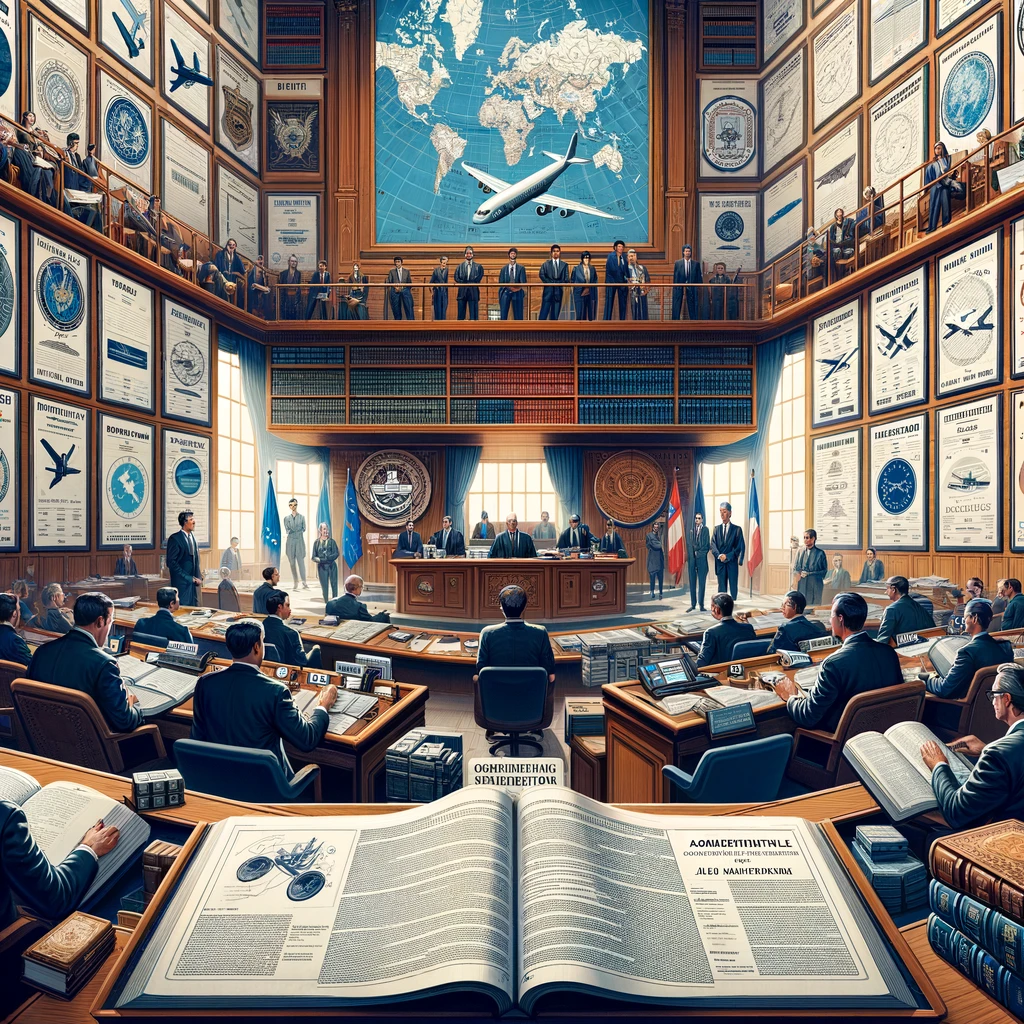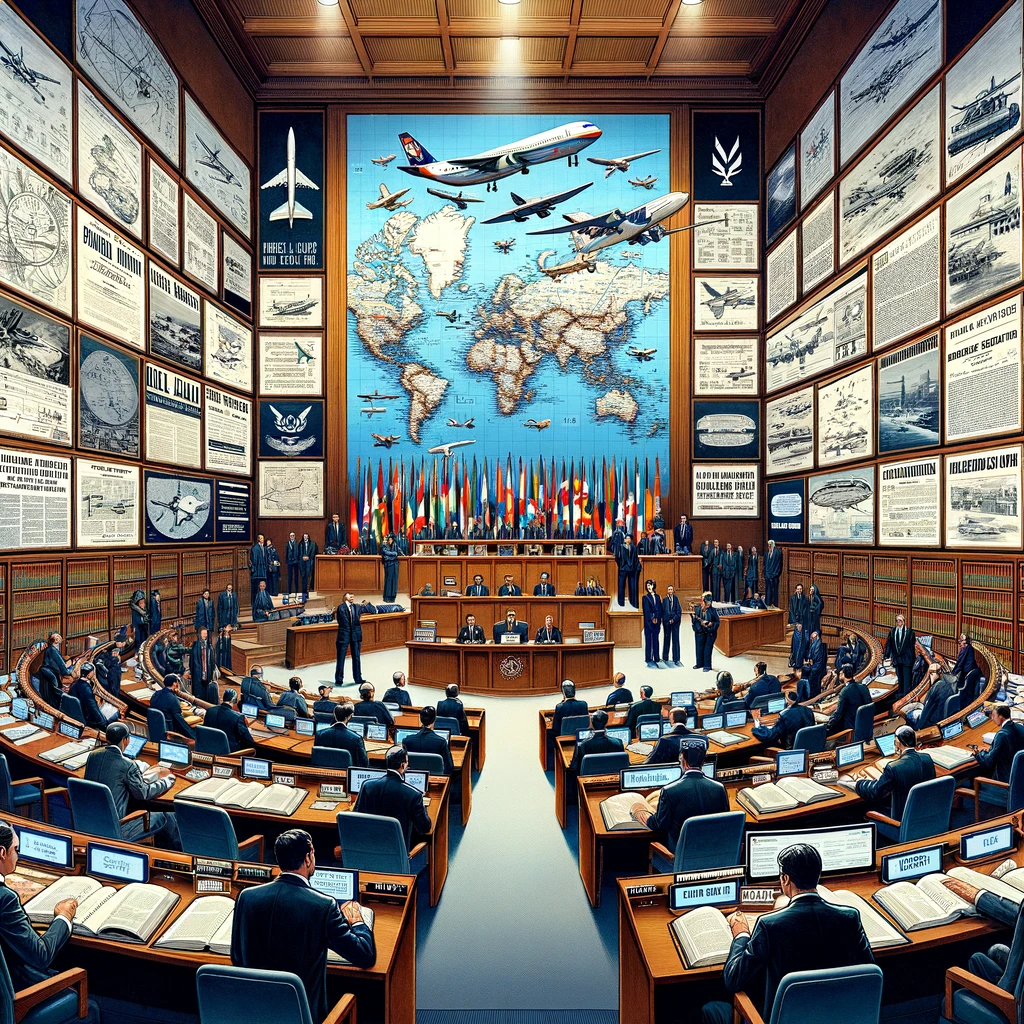When you board a plane or see one overhead, there’s a vast system of rules keeping it safe, legal, and efficient. These rules – often called air law – cover everything from how aircraft are built to how pilots are trained and how airspace is managed.

We break down here the main rules in aviation law, explain where they come from, and why they matter – whether you’re a student, a pilot, or just curious about how aviation stays safe in a complex world.
✈️ Why Do We Need Rules in Aviation?
Flying is one of the safest ways to travel – and that’s no accident. Rules in aviation law exist because:
- Airspace is shared across countries.
- Aircraft operate in high-risk environments.
- Global coordination is needed for safety, security, and efficiency.
Without common rules, international flights wouldn’t be possible. Imagine a U.S. pilot flying into France with different air traffic rules – chaos.
📜 Who Makes the Rules?
1. International Level – ICAO and the Chicago Convention
The International Civil Aviation Organization (ICAO), created under the Chicago Convention, sets global aviation standards. These are called SARPs (Standards and Recommended Practices). They’re not binding unless adopted by a country, but most countries follow them closely.
2. National Authorities
Each country has its own aviation authority:
- FAA in the U.S.
- EASA in the EU
- CAA in the UK
These bodies turn ICAO’s guidelines into national law and add their own rules depending on local needs.
⚙️ What Do the Rules Cover?
Aviation law rules are divided into many areas. Here’s a breakdown of some key categories:
| Area | Example |
|---|---|
| Airworthiness | Aircraft must meet design and safety standards |
| Flight Operations | Rules for take-off, cruising, and landing |
| Pilot Licensing | Who can fly and under what conditions |
| Air Traffic Control | How aircraft move through shared skies |
| Environmental Law | Limits on aircraft noise and emissions |
| Safety & Incident Reporting | How accidents are reported and investigated |
| Drone Regulation | Rules for operating UAVs safely |
Each of these categories helps ensure the system works smoothly across borders and time zones.
🔍 How Are These Rules Enforced?
National authorities carry out:
- Audits and inspections
- Pilot and operator licensing
- Aircraft certification
- Sanctions for violations (like grounding an aircraft or fines)
If an airline doesn’t comply, it can lose its license or face major penalties. Safety is non-negotiable in aviation.

🔄 Are the Rules Static or Evolving?
The rules in air law constantly change due to:
- New technologies (e.g., drones, electric aircraft)
- Security concerns (cyber threats)
- Environmental pressure (carbon emissions)
- Political and economic factors
For instance, ICAO updates its annexes regularly, and national authorities revise their rules to stay aligned. Keeping up with the latest is critical for aviation professionals.
🧠 Example: What Happens If Rules Aren’t Followed?
If a maintenance rule is ignored and an aircraft suffers a mechanical failure mid-flight, regulators can:
- Ground the airline
- Launch an investigation
- Impose penalties
This chain reaction also affects passenger trust and insurance liabilities.
🚁 New Frontiers: Drones, AI, and Cybersecurity
Modern challenges include:
- Drone integration into commercial airspace
- AI-assisted air traffic systems
- Data security in digital cockpit systems
Air law must adapt. In many cases, the rules are being written as the technology develops.
✅ Summary: Why These Rules Matter
Aviation rules are not just technical details – they:
- Save lives
- Enable global travel and commerce
- Ensure that different countries and companies play by the same rules
Whether you’re flying a commercial airliner or a camera drone, you’re operating under a legal framework built for global safety and trust.
📚 Want to Learn More?
Explore related topics:


